Great writing transforms educational websites into powerful learning tools, engaging students and igniting their curiosity. When words inspire, they foster deeper understanding and retention, making learning an exciting journey. Embrace this synergy for a brighter future!
The Synergy Between Great Writing and Educational Websites That Help Students Learn Better
In an age where information flows freely and learning transcends the confines of traditional classrooms, the intersection of great writing and educational websites has never been more crucial. Imagine a world where every student has access to compelling narratives that not only spark curiosity but also illuminate complex concepts with clarity and creativity. This synergy between exceptional writing and innovative digital platforms holds the potential to transform the educational experience, making learning not just accessible but truly engaging. As we delve into the power of well-crafted content and its role in educational websites, we uncover the magic that occurs when words inspire, inform, and ignite a passion for knowledge. Join us on this journey to explore how the fusion of articulate storytelling and cutting-edge technology can empower students to not only absorb information but to thrive in their academic pursuits. The future of education is bright, and it begins with the art of great writing.
The Power of Words in Shaping Online Learning Experiences
Words have an incredible ability to transform the online learning landscape, serving as the building blocks of knowledge and engagement. When crafted with care and intention, writing can foster a connection between educators and students that transcends the limitations of distance learning. This synergy between effective writing and educational websites not only enhances understanding but also encourages a sense of community among learners.
At the core of impactful online learning experiences lies the art of storytelling. Instructors who weave narratives into their lessons can captivate students’ imaginations, making complex concepts more relatable and easier to grasp. Consider the following strategies that leverage storytelling in educational content:
- Real-World Examples: Use case studies and personal anecdotes to illustrate key points.
- Engaging Scenarios: Create hypothetical situations that allow students to apply their knowledge.
- Interactive Elements: Incorporate quizzes and discussion prompts that invite students to share their thoughts.
Moreover, the choice of words plays a critical role in making content accessible to a diverse audience. Clear, concise language can break down barriers, ensuring that students from various backgrounds can grasp the material. Educational websites should strive for inclusivity by utilizing:
- Simple Vocabulary: Avoid jargon and complex phrases that may confuse learners.
- Visual Aids: Pair text with images, infographics, and videos to reinforce learning.
- Multilingual Options: Provide translations or support for non-native speakers to enhance comprehension.
Another essential aspect of great writing is its ability to inspire and motivate. Empowering language can ignite students’ passion for learning, encouraging them to explore subjects beyond the curriculum. By integrating motivational quotes and success stories into educational content, websites can create a culture of aspiration, urging students to pursue their goals with determination.
In addition to compelling written content, the structure and design of educational websites must support an engaging learning experience. A well-organized layout, intuitive navigation, and aesthetically pleasing visuals can complement great writing. Consider the following elements:
| Element | Description |
|---|---|
| Responsive Design | Ensures accessibility on all devices, enhancing user experience. |
| Interactive Features | Incorporates forums, chats, and feedback options to foster engagement. |
| Search Functionality | Allows users to easily find content relevant to their interests. |
Ultimately, the fusion of exceptional writing and thoughtfully designed educational websites can empower students to realize their potential fully. Through the power of words, we can create learning environments that inspire curiosity, enhance understanding, and foster a lifelong love of learning. By harnessing this potential, educators can truly revolutionize the online learning experience.
Crafting Compelling Content that Engages and Inspires
In the digital age, where information is abundant and attention spans are fleeting, the ability to craft content that captivates and motivates learners is essential. Great writing serves as a bridge between complex concepts and student comprehension, transforming dry facts into engaging narratives. To weave this magic, consider the following strategies:
- Know Your Audience: Understanding the diverse backgrounds and learning styles of students is crucial. Tailor your content to resonate with their experiences and aspirations.
- Use Storytelling: Stories capture the imagination and make lessons memorable. Incorporate anecdotes, real-world applications, and relatable characters to create emotional connections.
- Emphasize Clarity: Avoid jargon and convoluted language. Aim for simplicity and precision to ensure that your message is accessible to all learners.
- Incorporate Visuals: Infographics, videos, and diagrams can enhance understanding. When combined with written content, these elements cater to visual learners and break down complex ideas.
Moreover, the synergy between exceptional writing and educational websites can be further enriched by implementing interactive elements. Features such as quizzes, discussion forums, and feedback loops encourage active participation, making the learning process more dynamic. For instance, providing opportunities for students to share their insights or ask questions can create a vibrant learning community.
Consider leveraging technology to personalize the learning experience. Implementing algorithms that suggest tailored content based on a student’s progress can keep them engaged and motivated. This personalized approach not only makes learning more relevant but also fosters a sense of ownership over their educational journey.
To illustrate the impact of compelling content on student engagement, the following table highlights key features that contribute to an effective educational website:
| Feature | Description |
|---|---|
| Interactive Quizzes | Engage learners and assess understanding in real-time. |
| Multimedia Resources | Utilize videos and podcasts to cater to different learning styles. |
| Community Forums | Foster collaboration and discussion among peers. |
| Progress Tracking | Allow students to monitor their achievements and set goals. |
Ultimately, creating compelling content that both engages and inspires is not just about the written word; it’s about fostering an environment where learners feel empowered. By weaving together great writing, innovative technology, and a deep understanding of student needs, educational websites can truly transform the learning experience. This holistic approach ensures that each piece of content not only informs but also ignites curiosity and passion for lifelong learning.

Building a Bridge: How Writing Enhances Educational Resources
In an increasingly digital world, the impact of effective writing on educational resources cannot be overstated. It acts as a bridge, connecting complex ideas to learners in a way that is both engaging and accessible. Well-crafted content transforms dry information into vibrant narratives, prompting students to explore deeper and think critically. This not only enhances their understanding but also fosters a love for learning that can last a lifetime.
Clear Communication
At the heart of any successful educational website lies the ability to communicate ideas clearly. Clear writing breaks down barriers, allowing students of all backgrounds to grasp challenging concepts. When educational materials are articulated well, they:
- Reduce confusion and misinterpretation
- Encourage questions and spark curiosity
- Provide a solid foundation for further exploration
Engagement Through Storytelling
Integrating storytelling techniques into educational writing can transform the learning experience. Stories capture attention and make facts memorable. When students relate to the material on a personal level, they are more likely to engage deeply with the content. Educational resources that utilize storytelling often see:
- Increased retention of information
- A heightened interest in the subject matter
- Enhanced emotional connection to the learning process
Accessibility and Inclusivity
Writing that is mindful of diverse learning styles and needs creates more inclusive educational environments. By using straightforward language and avoiding jargon, writers can ensure that all students, regardless of their educational background, can benefit from online resources. Moreover, providing content in multiple formats—such as text, audio, and visuals—allows for:
- Tailored learning experiences
- Improved accessibility for students with disabilities
- Greater reach to non-native speakers
Impactful Visuals and Layout
Effective writing goes hand in hand with strategic use of visuals and layout. A well-designed educational website enhances the overall learning experience, making information easier to digest. Consider the following elements:
| Element | Impact on Learning |
|---|---|
| Headings & Subheadings | Guide readers through the content |
| Images & Infographics | Facilitate quick understanding of concepts |
| Whitespace | Reduces cognitive load, enhancing focus |
the synergy between well-written content and effective educational resources creates an enriching environment for students. By focusing on clarity, engagement, accessibility, and design, educators and content creators can build bridges that enhance learning experiences and empower students to thrive. Ultimately, great writing is not merely about conveying knowledge; it’s about inspiring a generation of learners to explore, question, and discover the world around them.

The Role of Storytelling in Captivating Student Attention
In the realm of education, capturing student attention is paramount, and storytelling emerges as a powerful tool to achieve this. By weaving narratives into the learning experience, educators can create a bridge between complex concepts and students’ everyday lives. When students can relate to the stories being told, they engage more deeply, fostering curiosity and a desire to learn.
Benefits of Storytelling for Student Engagement:
- Enhances Retention: Stories are easier to remember than isolated facts, making it more likely that students will retain the information presented.
- Stimulates Imagination: Storytelling encourages students to visualize scenarios, enhancing their imaginative thinking and creativity.
- Builds Empathy: By sharing diverse perspectives through narratives, students can develop a better understanding of different cultures and experiences.
- Increases Motivation: Engaging stories can spark interest in a subject, motivating students to explore further beyond the classroom.
Moreover, the integration of storytelling into educational websites can amplify these benefits. Imagine a digital platform where lessons unfold like captivating tales—each chapter filled with relatable characters and challenges that resonate with students. This immersive approach not only makes learning enjoyable but also transforms students into active participants in their educational journey.
Elements of Effective Storytelling in Education Websites:
| Element | Description |
|---|---|
| Character Development | Creating relatable characters that students can identify with. |
| Conflict and Resolution | Incorporating challenges that require problem-solving, mirroring real-life situations. |
| Interactive Elements | Encouraging participation through quizzes or decision-making pathways. |
| Visual Storytelling | Utilizing graphics and animations to enhance the narrative. |
The synergy between storytelling and digital education tools not only captivates students’ attention but also enriches their learning experiences. By embracing this approach, educators can create a dynamic environment where knowledge thrives, and students feel empowered to explore and learn without limits. As we continue to harness the power of storytelling, we pave the way for a future where education is not just informative but transformative.
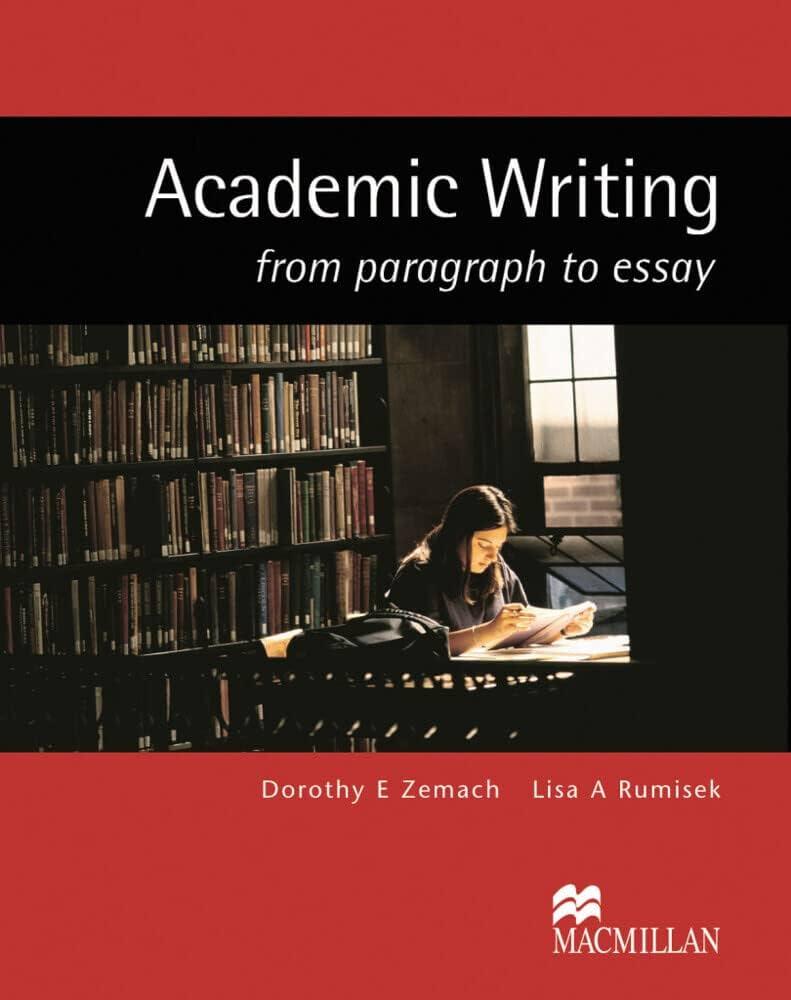
Clarity and Precision: The Essentials of Effective Educational Writing
Effective educational writing is the backbone of any learning resource. It not only conveys information but also engages students in a manner that resonates with their individual learning styles. When educational websites prioritize clarity and precision, they create an environment where students can thrive. Great writing ensures that concepts are communicated in a way that is both accessible and compelling.
Key elements of clarity in educational writing include:
- Simplicity: Use straightforward language to explain complex ideas.
- Structure: Organize content logically, guiding students through the material step-by-step.
- Consistency: Maintain a uniform tone and style to reduce confusion and enhance readability.
Precision in educational writing is equally important. It involves choosing the right words to convey the exact meaning without ambiguity. This is especially crucial when dealing with technical subjects where misunderstandings can lead to significant learning gaps. Effective educational websites employ language that is not only precise but also engaging, encouraging students to delve deeper into the subject matter.
Tips to achieve precision in writing include:
- Active voice: Use active voice to create more dynamic and engaging sentences.
- Avoid jargon: Simplify terminology where possible to ensure understanding.
- Examples: Provide clear examples to illustrate complex concepts, making them relatable.
When educational content is crafted with clarity and precision, it fosters a more effective learning environment. Students are more likely to engage with the material, take on challenges, and ultimately retain information. The synergy between great writing and educational websites equips learners with the tools they need to succeed academically.
| Clarity Elements | Precision Elements |
|---|---|
| Simplicity | Active Voice |
| Structure | Avoid Jargon |
| Consistency | Clear Examples |
By focusing on these elements, educational websites can transform the way students engage with learning material. When clarity and precision are at the forefront of educational writing, they not only communicate knowledge but also inspire a love for learning that transcends the confines of the classroom.
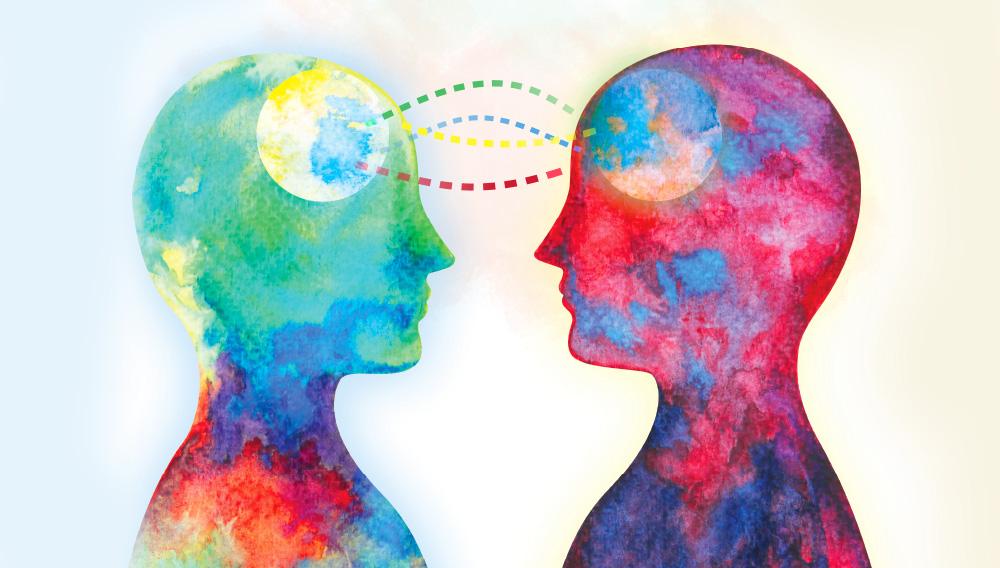
Creating an Emotional Connection with Students Through Language
Effective communication is the cornerstone of fostering a meaningful educational experience. When educators utilize language that resonates emotionally with students, they create a supportive environment that enhances learning. By understanding the power of words, instructors can bridge the gap between knowledge and personal connection, making lessons more relatable and engaging.
One approach to establishing this emotional connection is through storytelling. Narratives engage students on multiple levels, sparking imagination and empathy. When teachers share personal anecdotes or relate historical events through a compelling story, they do more than impart knowledge—they invite students into an experience. This emotional engagement not only makes the content memorable but also encourages students to connect with their peers and teachers on a deeper level.
Furthermore, the use of inclusive language is vital in creating a nurturing atmosphere. Consider the following strategies:
- Use of “we” instead of “you”: This simple shift invites students into the learning process as partners.
- Positive reinforcement: Encourage effort and mistakes as part of the learning journey, emphasizing growth over perfection.
- Encouraging questions: Foster an open dialogue where curiosity is celebrated, making students feel valued and heard.
A well-designed educational website can amplify these efforts by providing a platform that reinforces emotional connections. Websites that feature interactive content, visual storytelling, and user-friendly interfaces can transform the learning experience. Incorporating multimedia elements, such as videos and podcasts, can further enhance engagement, making difficult topics more accessible and enjoyable.
| Element | Impact on Learning |
|---|---|
| Storytelling | Enhances retention and emotional engagement |
| Inclusive Language | Builds a supportive classroom community |
| Interactive Features | Encourages active participation and exploration |
| Multimedia Content | Caters to diverse learning styles |
When students feel emotionally connected to their learning environment, their motivation increases, leading to higher achievement levels. Language serves as a powerful tool to unlock their potential. By cultivating an atmosphere where students feel understood and supported, educators can inspire a lifelong love of learning that transcends the classroom.
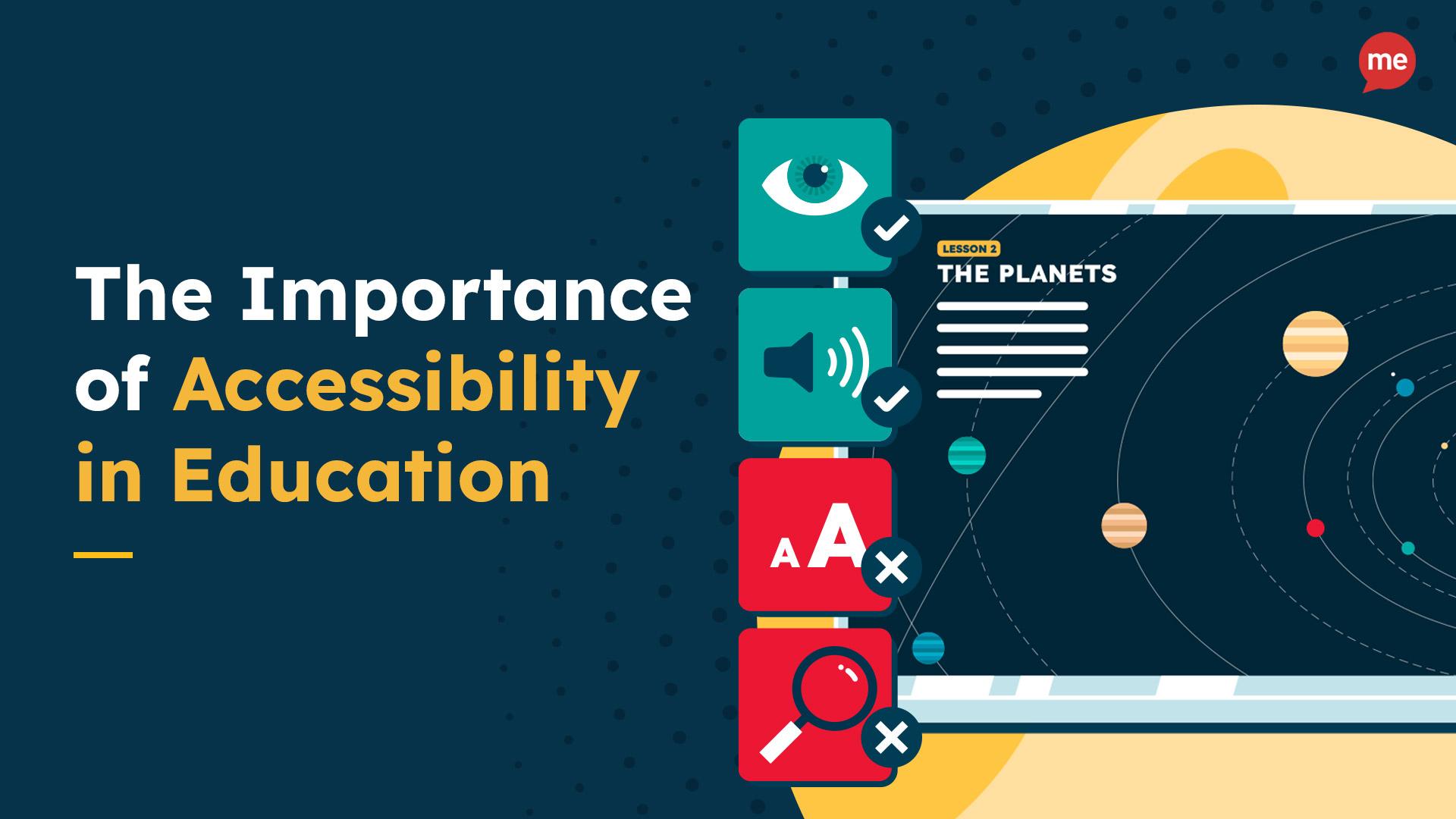
The Importance of Accessibility in Educational Content
In today’s diverse learning landscape, ensuring that educational content is accessible to all students is not just an obligation—it’s a necessity. Accessibility goes beyond mere compliance with regulations; it fosters an inclusive environment where every student, regardless of ability, can engage with and benefit from educational materials. By prioritizing accessibility, educators can unlock the full potential of their students, promoting equity and enhancing the overall learning experience.
When educational content is designed with accessibility in mind, it often improves the quality for all users. Consider these key aspects of accessibility:
- Universal Design: This approach advocates for the creation of products and environments that are usable by all people, to the greatest extent possible, without the need for adaptation. This not only aids students with disabilities but also helps everyone learn more effectively.
- Assistive Technology Integration: Incorporating tools like screen readers, text-to-speech software, and captioning can enhance comprehension and engagement for all students. These technologies can bridge gaps in learning and accommodate various learning styles.
- Clear and Simple Language: Using concise, jargon-free language can make complex ideas more understandable. This practice not only aids students with learning disabilities but also benefits non-native speakers and those new to a subject.
Research shows that accessible educational content can lead to higher retention rates and improved academic performance. Students are more likely to participate actively when they have equal access to resources. It is essential to remember that accessibility is not just a checkbox to tick off; it is a commitment to fostering a supportive learning community.
| Benefits of Accessible Educational Content | Impact |
|---|---|
| Enhanced Engagement | Students feel included and valued, leading to increased participation. |
| Improved Learning Outcomes | Accessible materials can contribute to better understanding and retention of information. |
| Broadened Audience | Accessibility attracts a more diverse student body, enriching the learning environment. |
Moreover, the legal implications of accessibility must not be overlooked. Educational institutions are increasingly held accountable for the materials they provide. Non-compliance can lead to legal challenges, reputational damage, and a loss of trust from the community. Therefore, investing in accessible content is not just a moral imperative; it’s also a strategic move to safeguard institutional integrity.
Ultimately, the synergy between great writing and accessibility can transform educational experiences. When content is crafted with clarity and inclusivity, it empowers students to pursue knowledge without barriers. By embracing accessibility, we cultivate an educational landscape where everyone can thrive and succeed, regardless of their circumstances.

Leveraging Multimedia to Complement Great Writing
In today’s fast-paced digital landscape, the combination of compelling text and engaging visuals transforms the learning experience. Great writing lays the foundation, delivering informative and thought-provoking content, but when paired with multimedia elements, it can elevate educational resources to new heights. Imagine a world where students aren’t merely passive recipients of information, but active participants in their own learning journey.
Visual elements such as images, infographics, and videos can enhance comprehension and retention. For instance:
- Infographics distill complex information into digestible visuals, making data more accessible.
- Videos can demonstrate processes or concepts in a way that static text simply cannot, providing real-world context.
- Interactive elements such as quizzes or clickable diagrams foster engagement and encourage exploration.
Furthermore, audio components like podcasts or narrated lessons can cater to auditory learners, broadening the appeal of educational resources. By integrating these multimedia elements, writers can reach a wider audience and accommodate diverse learning styles. This not only enhances the user experience but also reinforces the core messages presented in the text.
To illustrate the effectiveness of multimedia in education, consider the following table, which highlights various multimedia tools and their benefits:
| Multimedia Tool | Benefits |
|---|---|
| Infographics | Visual representation of data that simplifies understanding. |
| Videos | Engaging content that brings topics to life. |
| Podcasts | Accessible learning on-the-go, ideal for auditory learners. |
| Quizzes | Interactive assessments that reinforce knowledge. |
Ultimately, incorporating multimedia into educational writing is not just about aesthetics; it’s about forging connections and enhancing understanding. The integration of various formats creates an inclusive learning environment that caters to the needs of all students. By doing so, educators can inspire curiosity and foster a love for learning that transcends traditional boundaries.
the synergy between great writing and multimedia is a powerful force in education. It enriches the learning process, making it more enjoyable and effective. As we continue to innovate and adapt to the needs of learners, embracing this dynamic combination will undoubtedly lead to a more informed, engaged, and empowered student body.
Fostering Critical Thinking Skills Through Thoughtful Content
In today’s rapidly changing world, the ability to think critically is more crucial than ever. Educational websites that prioritize thoughtful content play a pivotal role in nurturing this essential skill among students. By presenting information in a structured, engaging manner, these platforms encourage learners to question assumptions, analyze arguments, and synthesize diverse viewpoints.
Encouraging Inquiry: One of the most effective ways to stimulate critical thinking is to foster a culture of inquiry. Educational sites can achieve this by:
- Providing open-ended questions that promote discussion.
- Incorporating case studies that require students to weigh evidence and draw conclusions.
- Offering interactive quizzes that challenge students to apply their knowledge in new contexts.
By designing content that invites students to engage actively, these platforms transform passive learning into an exciting exploration of ideas. This method not only enhances understanding but also inspires a lifelong love of learning.
Promoting Diverse Perspectives: Exposure to a variety of viewpoints is fundamental for developing well-rounded critical thinkers. Educational websites can cultivate this diversity by:
- Featuring articles and resources from multiple authors with differing opinions.
- Encouraging debate through forums and comment sections, where students can express their views and challenge each other respectfully.
- Highlighting global issues that require consideration of cultural contexts and ethical implications.
Through such initiatives, students learn to appreciate complexity and nuance in arguments, leading to more informed and thoughtful conclusions.
Integrating Real-World Applications: Critical thinking is best honed through real-world challenges that require students to apply their knowledge. Educational websites can bridge the gap between theory and practice by:
- Providing project-based learning opportunities that mimic real-life scenarios.
- Offering simulations that allow students to experiment with decision-making processes.
- Connecting learners with professionals in their fields of interest for mentorship and guidance.
By situating learning within a practical context, students are encouraged to think critically about the decisions they make and the consequences that follow, thus preparing them for future challenges.
To illustrate the effectiveness of fostering critical thinking through thoughtfully curated content, consider the following table that outlines key strategies and their potential outcomes:
| Strategy | Outcome |
|---|---|
| Open-ended Questions | Enhanced dialogue and deeper understanding |
| Diverse Perspectives | Broadened worldview and empathy |
| Real-World Applications | Increased engagement and skill relevance |
When educational websites prioritize these strategies, they not only enrich the learning experience but also empower students to navigate complex information landscapes with confidence and clarity.

Encouraging Collaboration and Interaction in Learning Environments
Creating an engaging learning environment hinges on the power of collaboration and interaction among students. When educational websites leverage great writing, they not only communicate information effectively but also foster a sense of community and shared exploration. By employing interactive features and collaborative tools, these platforms become catalysts for deeper understanding and greater student engagement.
One key aspect is the integration of discussion forums and peer review systems. When students are encouraged to share their thoughts and feedback, they learn from each other in ways a traditional classroom might not allow. This peer interaction can significantly enhance critical thinking skills and promote a culture of mutual respect and open-mindedness. Here are some innovative features that can be included:
- Real-time chat rooms for group discussions on assignments.
- Collaborative projects that allow students to work together remotely.
- Feedback systems where students can provide input on each other’s work.
Moreover, educational websites can use gamification to increase engagement. By incorporating elements such as quizzes, challenges, and point systems, students are motivated to participate actively. This playful approach not only makes learning fun but also enhances retention rates as learners engage with the material in a more meaningful way. For instance, a website can showcase progress through visually appealing leaderboards:
| Student Name | Points Earned | Rank |
|---|---|---|
| Alice Johnson | 320 | 1 |
| Michael Smith | 280 | 2 |
| Sarah Connor | 250 | 3 |
Another powerful tool for collaboration is the use of multimedia resources. Educational websites can incorporate videos, podcasts, and interactive simulations that require students to discuss and collaborate to solve problems. This variety not only caters to different learning styles but also encourages students to work together, sharing their unique perspectives. For example, a video that poses a complex question can spark a multitude of discussions among students, pushing them to engage with the content actively.
Lastly, by embedding social media integration, educational platforms can tap into the power of networks that students already use. Encouraging students to share their learning experiences and insights on social platforms can create a vibrant community outside the confines of the classroom. This connection helps to break down geographical barriers and fosters a global perspective, where students learn not just from their peers but from a diverse array of voices and experiences.
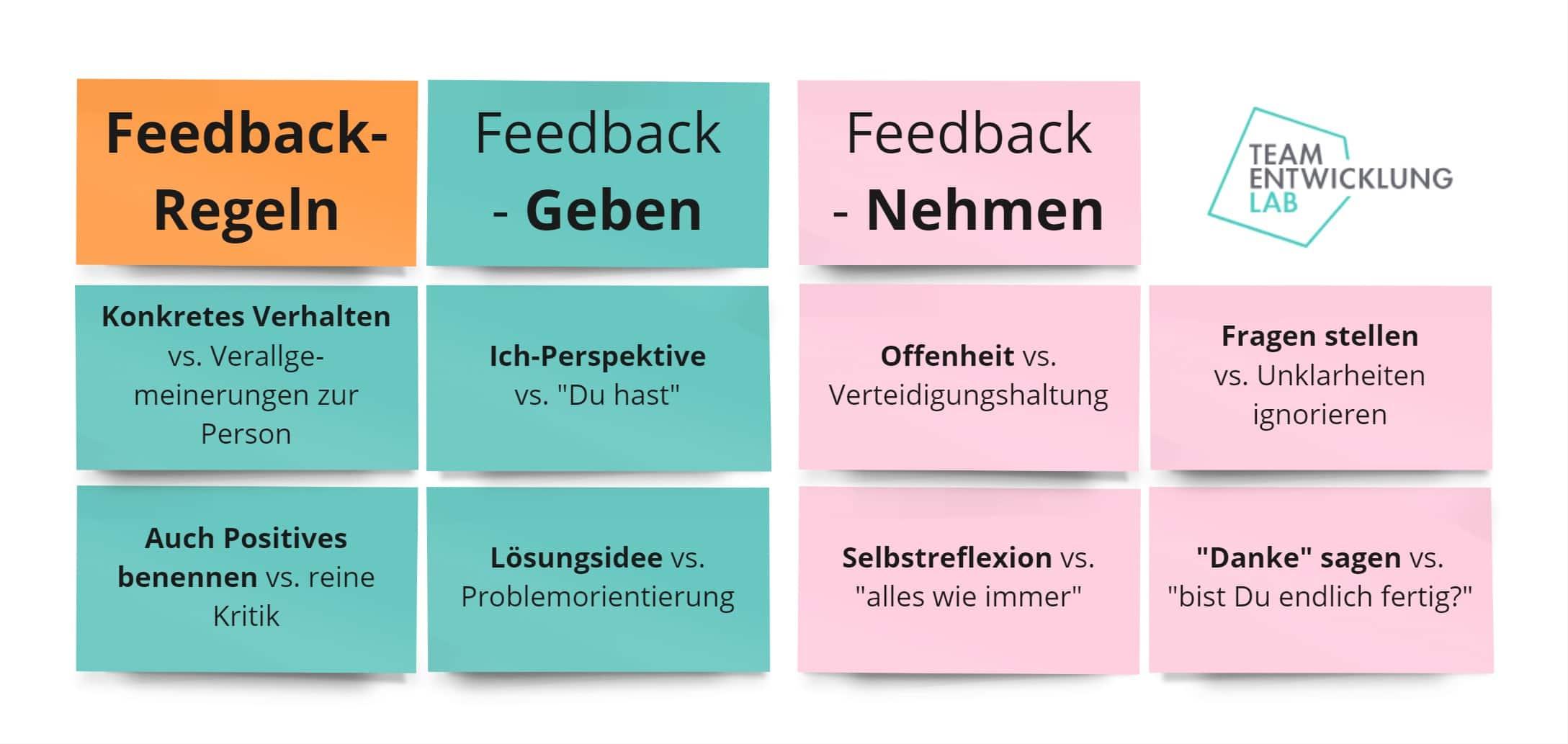
The Impact of Feedback: Refining Writing for Student Success
The journey of mastering the written word is profoundly influenced by the feedback students receive throughout their educational experiences. Feedback serves not merely as a critique but as a powerful catalyst for growth and improvement. When students receive constructive input on their writing, they are given a roadmap that guides them toward clarity, coherence, and creativity.
Consider the following key aspects that highlight how feedback refines writing:
- Clarification of Ideas: Feedback helps students distill their thoughts, enabling them to express complex ideas more clearly.
- Understanding Audience: Constructive criticism teaches students to adapt their writing style based on the intended audience, enhancing engagement and effectiveness.
- Skill Development: Regular feedback fosters essential writing skills such as grammar, vocabulary, and structure, leading to overall improvement.
- Confidence Building: Positive reinforcement alongside constructive criticism boosts students’ confidence, encouraging them to take risks in their writing.
Moreover, the availability of educational websites that facilitate feedback can significantly enhance this process. These platforms often incorporate peer reviews and automated tools that provide immediate suggestions, making the feedback loop more dynamic and accessible. By utilizing such resources, students can:
- Access Diverse Perspectives: Engaging with a wider audience allows them to receive varied insights, enriching their writing.
- Track Progress Over Time: Many educational sites offer features that allow students to review previous versions of their work, illustrating growth and areas for continued improvement.
- Engage in Collaborative Learning: Group discussions and forums promote a sense of community, where students can learn from one another’s strengths and weaknesses.
To illustrate the impact of feedback on writing proficiency, consider the following table, which showcases common writing challenges and the corresponding feedback strategies that can address them:
| Writing Challenge | Feedback Strategy |
|---|---|
| Vague Thesis Statements | Encourage specificity and clarity in arguments. |
| Poor Structural Flow | Suggest transitions and reorganization of paragraphs. |
| Weak Vocabulary | Recommend synonyms and varied word choices. |
| Grammar Errors | Highlight common mistakes and provide grammar resources. |
Ultimately, the synergy between effective writing and educational websites that facilitate feedback creates a nurturing environment for students. By embracing the iterative process of writing and refining through feedback, students not only enhance their writing abilities but also cultivate critical thinking and problem-solving skills that are invaluable in their academic journeys and beyond. In this way, feedback emerges as a cornerstone of student success, guiding them towards becoming articulate, confident communicators ready to face the challenges of the future.
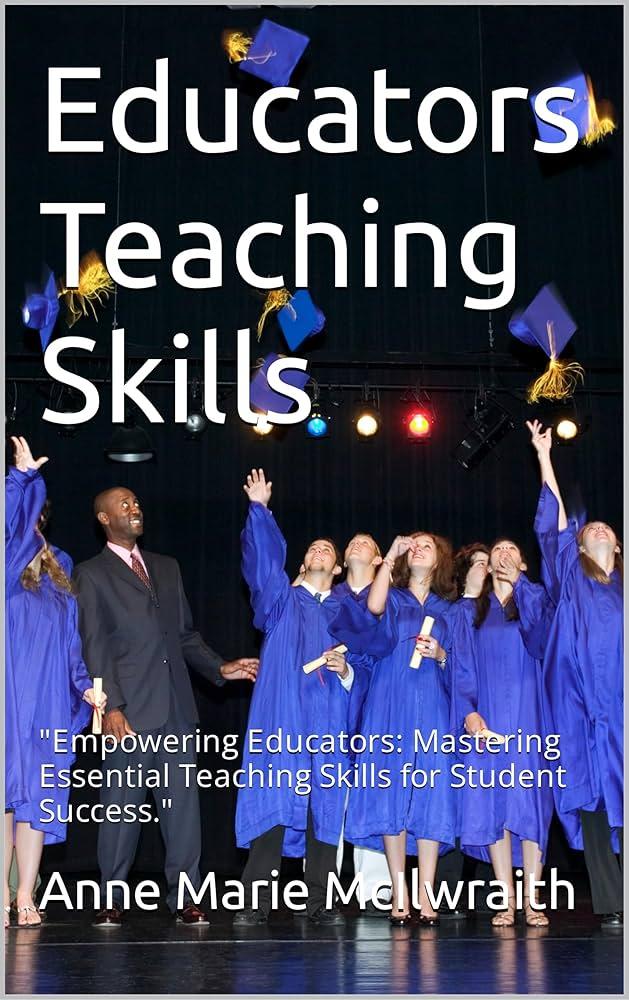
Empowering Educators: Tools and Strategies for Excellent Writing
In today’s digital age, the intersection of effective writing and the tools available through educational websites creates a powerful synergy that can elevate student learning experiences. Educators have the unique opportunity to harness this synergy by incorporating high-quality writing practices into their teaching methodologies, ultimately fostering an environment where students can thrive academically.
One of the key strategies for empowering students is to leverage digital platforms that promote interactive writing exercises. By utilizing websites that offer writing prompts, peer feedback systems, and collaborative projects, educators can encourage students to express their ideas more clearly and creatively. Here are some recommended tools that can significantly enhance writing skills:
- Purdue OWL: An essential resource for grammar and citation guidelines.
- Grammarly: A writing assistant that helps refine style and correctness.
- Writer’s Workshop: A platform for peer review and assistance in the writing process.
- Storybird: A creative outlet for storytelling through visuals and text.
Moreover, integrating structured writing frameworks can assist students in developing their thoughts systematically. Tools like MindMeister or Coggle can help students brainstorm and organize their ideas visually, paving the way for stronger written content. By teaching students how to outline and structure their writing, educators not only enhance clarity but also instill a sense of confidence in their ability to communicate effectively.
To further enrich the writing experience, consider introducing digital storytelling as a format for assessment. This method allows students to combine written narratives with multimedia elements, thereby engaging different learning styles. Educators can guide students through creating their own stories using platforms such as Adobe Spark or WeVideo, fostering creativity and enhancing their storytelling abilities.
The following table summarizes how effective writing tools align with common writing challenges faced by students:
| Writing Challenge | Recommended Tool | Benefit |
|---|---|---|
| Poor grammar and syntax | Grammarly | Improves writing quality and accuracy |
| Structuring essays | MindMeister | Helps organize thoughts visually |
| Lack of creativity | Storybird | Inspires imaginative storytelling |
| Feedback and collaboration | Writer’s Workshop | Encourages peer engagement |
Ultimately, empowering educators with effective writing tools not only enhances their teaching practice but also cultivates a generation of confident, articulate writers. By embracing innovative resources and strategies, educators can transform the way students approach writing, making it an integral, enjoyable part of their learning journey.
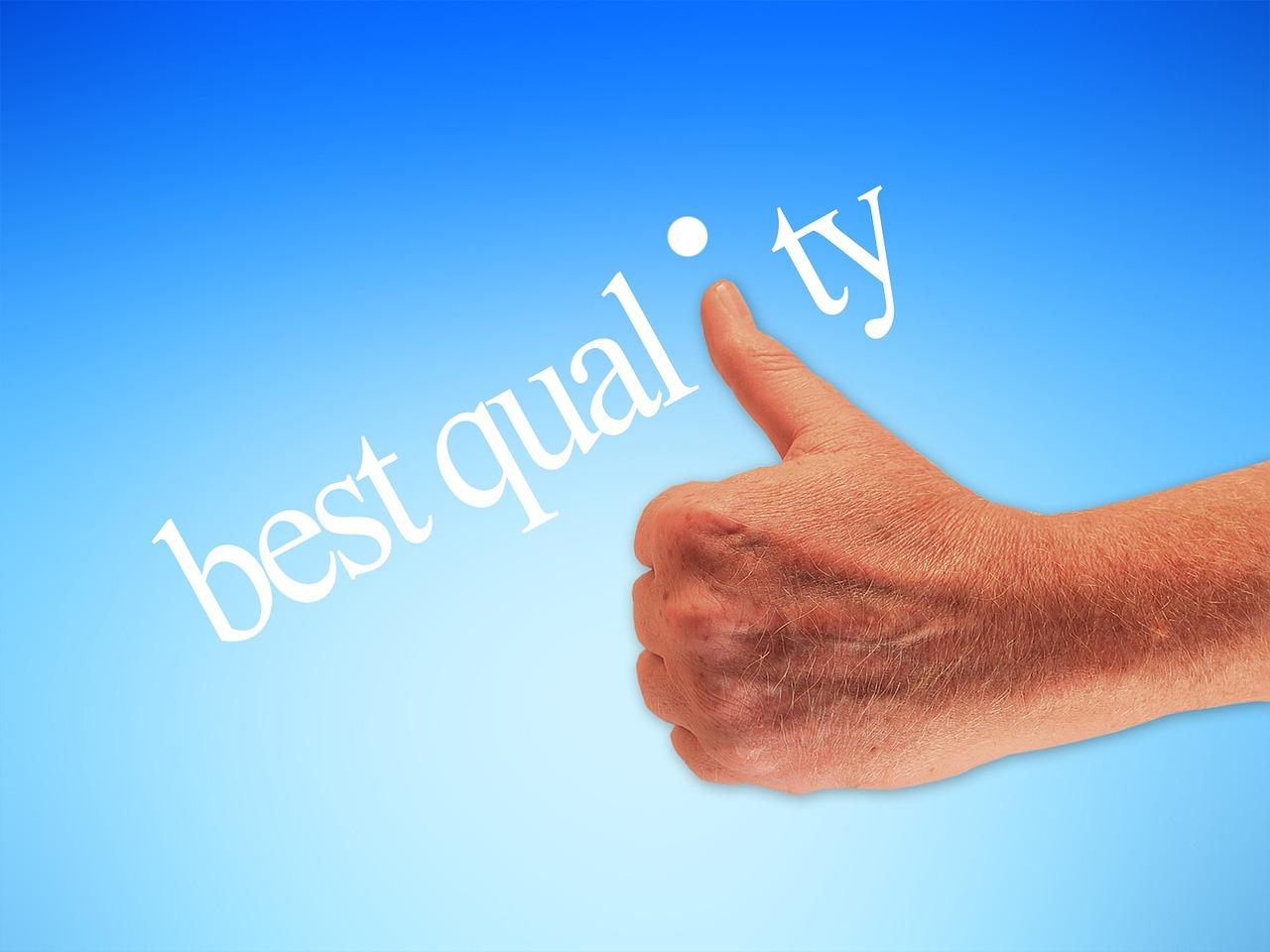
The Future of Learning: Integrating Great Writing into Digital Platforms
The evolution of education in the digital age is reshaping how students absorb information and develop critical skills. At the heart of this transformation lies the importance of great writing, which serves as the bedrock for effective communication and comprehension. By integrating exceptional writing into educational websites, we can create a dynamic learning environment that not only informs but also inspires students to think critically and creatively.
When students engage with well-crafted content, they are more likely to:
- Enhance comprehension: Clear and concise writing fosters better understanding of complex ideas.
- Stimulate creativity: Rich narratives and compelling arguments encourage students to imagine and innovate.
- Develop critical thinking: Thought-provoking articles prompt learners to analyze, question, and form their own opinions.
Moreover, educational platforms that prioritize great writing can significantly improve user experience. By utilizing a conversational tone, relatable examples, and engaging visuals, these platforms can capture the attention of diverse learners. This approach not only makes the material more accessible but also cultivates an emotional connection with the content, driving students to delve deeper into subjects that resonate with them.
Incorporating interactive elements enhances this synergy, as students benefit from:
- Personalized learning: Tailored content that adapts to individual learning speeds and styles.
- Collaborative opportunities: Platforms that facilitate peer-to-peer interaction allow students to share insights and feedback.
- Immediate feedback: Instant assessments and quizzes can motivate students to refine their understanding and writing skills.
The following table illustrates key features of successful educational websites that integrate great writing:
| Feature | Description |
|---|---|
| Engaging Content | Utilizes storytelling techniques to make lessons more relatable and memorable. |
| User-Friendly Design | Easy navigation helps students focus on learning rather than getting lost in the interface. |
| Variety of Formats | Different content forms, such as articles, videos, and podcasts, cater to diverse learning preferences. |
As we look to the future, the challenge for educators and content creators alike will be to harness the power of technology without sacrificing the art of great writing. By fostering environments that celebrate clarity, creativity, and engagement, we can equip students with the skills they need to navigate an increasingly complex world. The synergy between great writing and educational websites is not just a trend; it is a crucial step toward shaping the minds of tomorrow’s leaders.

Cultivating Lifelong Learners Through Inspiring Educational Content
Educational websites have transformed the learning landscape, creating a dynamic synergy between exemplary writing and effective educational content. This relationship is crucial for fostering an environment where students not only absorb information but are also inspired to seek knowledge beyond the classroom. Great writing serves as the backbone of these platforms, crafting narratives that engage learners and ignite their curiosity.
To cultivate lifelong learners, educational content must be:
- Engaging: Writing that captivates the reader’s attention, making complex subjects relatable and exciting.
- Accessible: Clear and straightforward language ensures that students of all levels can grasp the material.
- Informative: Well-researched facts and insights, providing depth to topics while encouraging critical thinking.
The intersection of great writing and educational websites fosters a unique learning atmosphere. When students interact with thoughtfully crafted content, they are more likely to:
- Develop a passion for learning that extends beyond their immediate curriculum.
- Enhance their critical thinking skills, as they engage with diverse perspectives and arguments.
- Utilize their newfound knowledge in practical, real-world scenarios.
| Writing Element | Impact on Learning |
|---|---|
| Storytelling | Creates memorable connections and aids retention. |
| Visual Aids | Enhances understanding and keeps learners engaged. |
| Interactive Content | Encourages active participation and deeper exploration. |
Ultimately, the goal of educational websites is to nurture a generation of lifelong learners who are not just consumers of information but active participants in their educational journeys. By harnessing the power of great writing, these platforms can create a ripple effect that inspires students to explore, question, and innovate. In this way, we are not only delivering knowledge but also empowering individuals to shape their own futures through continuous learning.
Frequently Asked Questions (FAQ)
Q&A: The Synergy Between Great Writing and Educational Websites That Help Students Learn Better
Q1: Why is great writing essential for educational websites?
A1: Great writing is the backbone of effective communication. In the realm of educational websites, it transforms complex concepts into engaging, digestible content that students can easily understand. Well-crafted writing not only captivates attention but also fosters curiosity, making learning an enjoyable and enriching experience. An eloquent narrative can inspire students to explore topics more deeply, encouraging a passion for knowledge that extends beyond the screen.
Q2: How do educational websites leverage great writing to enhance student learning?
A2: Educational websites utilize compelling writing to create clear, concise, and relatable content. By employing storytelling techniques, they make learning feel relevant and personal. Great writing breaks down barriers—whether they be jargon or dense texts—allowing students of all backgrounds to grasp concepts quickly. Moreover, it can instill a sense of purpose, guiding students on their educational journey and motivating them to persist in their studies.
Q3: Can you provide examples of how great writing impacts student motivation?
A3: Absolutely! Consider a website that narrates the journey of a historical figure. Instead of merely listing facts, it weaves a narrative that highlights their struggles and triumphs. This storytelling approach not only makes the material memorable but also motivates students by showing them the human side of learning. When students see the relevance of their studies through engaging writing, they’re more likely to invest their time and effort into mastering the subject.
Q4: What role does interactive content play in conjunction with great writing?
A4: Interactive content, such as quizzes, videos, and discussion forums, enhances the experience of great writing by fostering engagement. When students read a well-written article and then have the opportunity to apply that knowledge through interactive features, they reinforce their learning. This synergy allows students to actively participate in their education, making the process not just about passive absorption but active exploration.
Q5: How can educators and content creators collaborate to improve educational websites?
A5: Collaboration between educators and content creators is vital. Educators provide insights into what students need and how they learn, while writers craft that knowledge into compelling narratives. Together, they can co-create resources that are not only informative but also engaging. By understanding the challenges students face, writers can tailor their content to address those specific needs, resulting in a more effective learning experience.
Q6: What can students do to maximize their learning from these resources?
A6: Students can maximize their learning by approaching educational websites with an open and inquisitive mindset. They should actively engage with the content—take notes, ask questions, and participate in discussions. Additionally, seeking out resources that feature high-quality writing can make a significant difference. By prioritizing well-written material, students can enhance their comprehension and retention of information, ultimately making their learning journey more effective and enjoyable.
Q7: In what ways do you envision the future of educational websites evolving with great writing?
A7: The future of educational websites will likely embrace even more innovative approaches to great writing, integrating multimedia storytelling and personalized content. As technology advances, we can expect adaptive learning platforms that leverage AI to tailor narratives to individual learning styles. This evolution will create more immersive experiences, making education not just accessible but also deeply impactful. Ultimately, the synergy between great writing and educational websites will continue to empower students, transforming the way they learn and grow.
the magic of great writing paired with interactive educational websites is a powerful force that can elevate learning to new heights. By embracing this synergy, we can inspire a generation of learners who are not only informed but also passionate and engaged in their pursuit of knowledge. Together, let’s champion this transformative journey!
Insights and Conclusions
the fusion of exceptional writing and innovative educational websites holds immense potential for transforming the way students learn. As we navigate this digital age, we must recognize that clarity, creativity, and engagement in content creation can elevate educational experiences and foster a deeper understanding of complex subjects.
Imagine a world where every student, regardless of their background, can access resources that not only inform but inspire. Great writing paired with intuitive design can bridge gaps in knowledge and ignite a passion for learning that lasts a lifetime.
As educators, writers, and technologists, we have the power to harness this synergy. Let us commit to crafting compelling narratives and user-friendly platforms that resonate with learners and empower them to reach their full potential. Together, we can cultivate a generation of thinkers, creators, and innovators who are not just prepared for the challenges of tomorrow but are eager to embrace them.
So, let’s champion great writing and invest in the educational tools that will help our students soar. The future of learning is bright, and with our combined efforts, we can illuminate the path for every eager mind ready to explore the wonders of knowledge. The journey begins now—let’s write it together!





